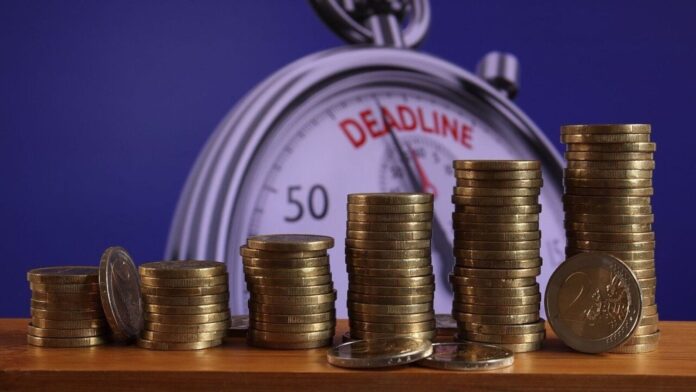A charismatic Renaissance Man, he began his tenure in 1995, and suddenly the Bank’s swanky atrium was swamped with fresh perspectives, new urgencies and a different kind of celebrity.
Staff would swarm the Main Complex to see a celebrity economist present an academic paper at an oversubscribed brown-bag lunch, and be startled by sightings of Helen Gurley Brown, editor of Cosmopolitan, Chinua Achebe, the Nigerian novelist, and, with luck, even a rockstar like Bono.
Wolfensohn had come to head the Bank at an all-time low. The 50 Years is Enough movement was calling for the dismantling of Bretton Woods institutions.
There was anger over the Bank’s support for dams in India and China that had been vehemently opposed by local activists and the International Monetary Fund’s (IMF) structural adjustment packages that had failed the poor in Africa.
And now, to top it all, low-income countries were struggling under a sea of mounting debt owed to multilateral institutions. This dissatisfaction first emerged from stakeholders in the South that had borne the brunt of failed policy prescriptions and now made common cause with civil society, including global NGOs in the North, such as Oxfam, which were well networked and whose researchers could influence sympathetic economists, some within the establishment.
With their advocacy skills, they were also able to lobby, very effectively and savvily, policymakers in European capitals with significant influence over the boards of the Bank and Fund.
The idea of a solution to multilateral debt had been brewing for some time and now with a change of Bank leadership, this unlikely triumvirate seized the moment. The Jubilee 2000 campaign was born, which called for a one-time debt forgiveness for the poorest countries before the new millennium.
Through an alliance of the Catholic Church and Bono, who was the new poster child of debt relief, it convinced taxpayers in the US and UK to pressure elected representatives, and found an ally in Wolfensohn.
Despite being dubbed the ‘Elvis of economics’ by Bono, Wolfensohn was not an economist but a financier. He seized upon the idea that a lender to the world’s poorest nations was sure to make some bad bets.
While the private sector had mechanisms for bankruptcy and debt relief, countries had no such recourse. So they would borrow more and more to service their debt in a vicious cycle that their creditors were aware of.
In 1996, Wolfensohn signed the Heavily Indebted Poor Countries’ (HIPC) Initiative, which committed to reduce the net present value of debt to 200-250% of annual exports in 41 countries. In 1999 came the Enhanced HIPC Initiative, with 150% of exports as its debt target. Debt relief was now the new mantra in Washington and lingering doubts on moral hazard were banished from the discourse.
Two points are striking about the HIPC. First, even though countries were required to maintain a stable macroeconomic programme with the IMF, there were no conditions to ensure that countries emerged from the cycle of indebtedness through policies to improve governance, manage public funds better, foster growth in productive sectors or to diversify exports.
Rather, countries were required to divert savings from cancelled debt-service payments into education and health spending. Second, although the HIPC was envisaged as a comprehensive solution, non-Paris Club bilateral and private creditors were under no obligation to pardon debt.
As a result, debt cancellation under the HIPC did not deliver debt sustainability. By 2005, debt had again crossed 150% of exports in most beneficiary countries. Paris Club debt got cancelled, but countries did not have much luck with other creditors.
Vulture funds started suing some for private loan defaults. Multilateral bodies came up with yet another debt relief programme, the Multilateral Debt Relief Initiative (MDRI). To date, about $99 billion of debt has been forgiven under the HIPC and MDRI.
Today, many African nations again face a debt crisis and are close to insolvency. But the composition of creditors has changed dramatically. China is the elephant in the room, with an estimated $90 billion in loans to Africa, about 60% of all bilateral loans; the Paris Club only accounts for 5%.
Private lending grew from 30% of total debt in 2010 to 44% in 2021, a period in which many African countries accessed the bond market for the first time.
While countries have faced major economic shocks (covid and the Ukraine war), they’re still burdened, as they have been unable to translate borrowings into a diversified export base and sustained economic growth.
One lesson from the HIPC experience is that any multilateral debt arrangement must bring private lenders and China to the table, no matter how challenging, for the slightest chance of success.
History suggests that only a highly effective alliance of actors across states, civil society and multilateral banks (and a rock star or two) will be able to deliver a large-scale transfer of resources. And even then, it may not be a permanent solution.
Debt cancellation does not ensure debt sustainability in the absence of local reforms to stimulate growth. Elvis may have left the building but the debt relief show isn’t over.
#Debt #relief #poor #countries #Time #effort
